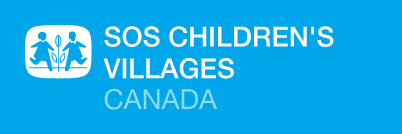
It was in the early 1980's, with the help of the Panamanian First Lady at the time, that SOS-Children's Villages International initiated its activities in Panama. In 1982, the first SOS Children's Village could be started. It was built on one of the first stretches of land that the United States had returned to Panama as part of the Torrijos-Carter Agreement of 1977. At present there are in Panama four SOS Children's Villages, three SOS Youth Facilities and one SOS Vocational Training Centre.
For just $36/month you can sponsor a child and help provide an orphaned or abandoned child with:
- A safe and nurturing home
- A loving SOS mother
- Quality education
- Healthcare
- Nutritious food
- Clothing and toys
- All the things necessary for a bright future
SOS in Panama
SOS Children's Villages has been present in Panama since the 1980s. The first SOS Children's Village went into operation in 1982. Through our work in four locations - in Panama City, Davíd, Colón and Penonomé - we have been supporting children and young people by providing day-care, education, vocational training, playgrounds and sports facilities.
When children can no longer stay with their families, they are cared for by their SOS mothers in one of the SOS families.

Some facts about Panama
The Republic of Panama separates North from South America and is therefore often referred to as "Bridge of the Americas". It used to be part of Colombia before declaring its independence from the southern neighbour in 1903, backed by the United States.
Panama has borders with Costa Rica to the north, Colombia to the south, the Pacific Ocean and the Caribbean Sea.
With a total population of roughly three million, Panama is one of the smallest countries in the Americas.
At present, it is characterised by one of the fastest growing economies in the world. Revenue from the Panama Canal, which has been under Panamanian control since the year 2000, accounts for a major portion of Panama's Gross Domestic Product.
Gap between rich and poor
The Human Development Index (HDI) for Panama shows that development efforts in the country have improved slightly during the past 30 years. Compared to most other countries in Central America, Panama's HDI is clearly above the regional average.
Although Panama has made significant economic progress, the country's economic growth in recent years has been marked by great disparities. The income shared by the richest 20 per cent in Panama amounts to 57 per cent of the total national income.
The gap between the rich and the poor is still noticeably large. Consequently, a fairly large number of Panamanians has not been able to cash in on the aforementioned economic boom. They still live in conditions of extreme poverty. The indigenous minorities are most affected by this phenomenon with a striking 96 per cent suffering extreme poverty.
Poor infrastructure, scarce resources and malnourishment are not limited to rural areas. In Panama City, the country's capital, gang violence, drug trafficking and child prostitution as a result of social exclusion and non-existent family structures are omnipresent. Particularly affected are the crime-ridden ghettos of Curundú and El Chorrillo.
Within Central America, Panama has the third-highest prevalence of HIV among its population aged 15-49. Most people suffering from HIV do not receive proper retro-viral treatment. Thus, HIV/AIDS is the third-leading cause of mortality in the country.
Situation of the children in Panama
Despite economic progress in Panama, the phenomenon of child labour has not yet disappeared. Within the last 10 years, the number of children aged 5-14 engaged in labour activities has increased by 4.5 per cent to a total of roughly 830,000. Children who live in rural or indigenous communities outside of the capital are most affected. Around half of these children do not go to school because they have to work during school hours. Tuition fees and indirect costs such as school books, uniforms and school supplies often make schooling inaccessible for poor families.
In Panama City, young kids from underprivileged families often form part of street gangs in notorious neighbourhoods like El Chorrillo or Curundú. By entering the gang, they often enter a never-ending vicious circle. Drug abuse, sexual harassment, violence and homicide quickly become part of their everyday life. Due to non-existent family structures, leaving the gang is often not an option.
Commercial sexual exploitation of children as a consequence of poverty has also become a growing problem in Panama.
Our Impact
Image
The SOS Children's Village in Panama provides loving homes to orphaned and abandoned children |
4 VILLAGES | 350 Orphaned and Abandoned Children |
Image
The SOS Youth Facilities in Panama provides youth with a loving environment where they learn to transition into independent living and to expand their education |
3 YOUTH FACILITIES | 106 Youths in our Care |
Image

SOS Vocational Training Centres in Panama provide young adults from our youth centres, SOS villages and the surrounding community with the skills they will need to secure reliable employment. They provide realistic job opportunities for the future and an avenue to independence. |
1 VOCATIONAL TRAINING CENTRES | 80 Youth and adult students |
Our Impact







